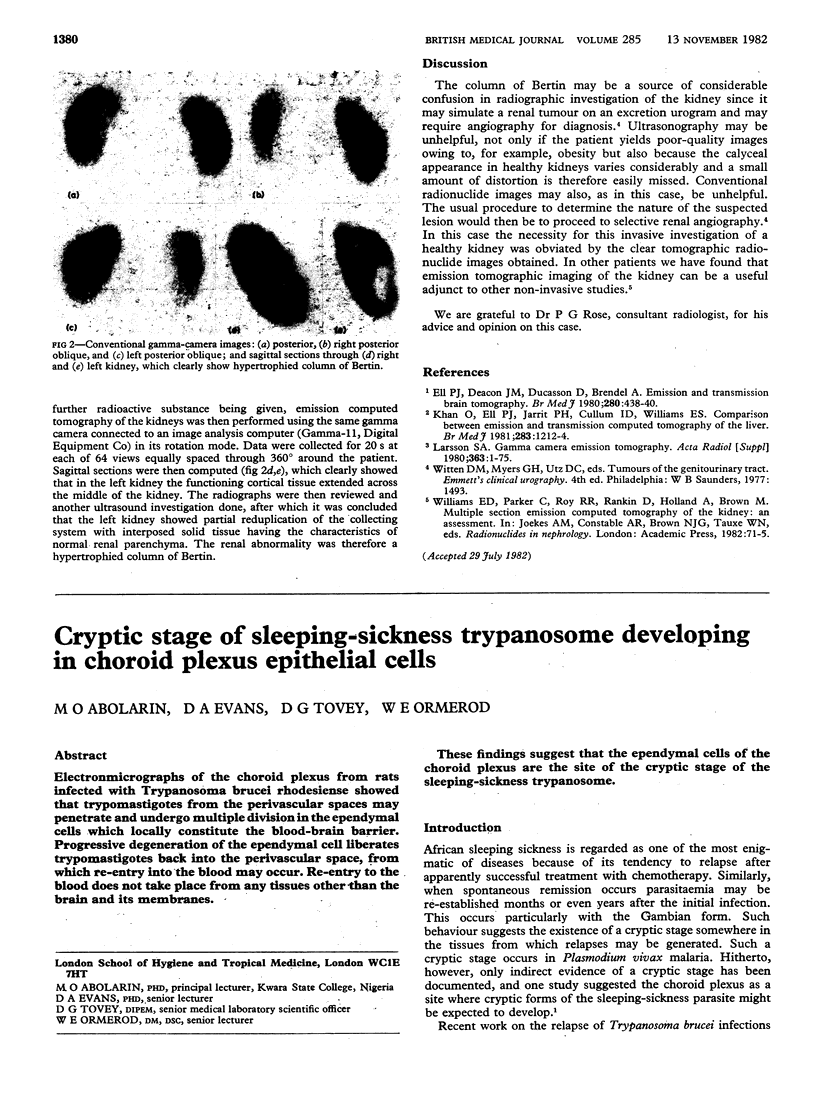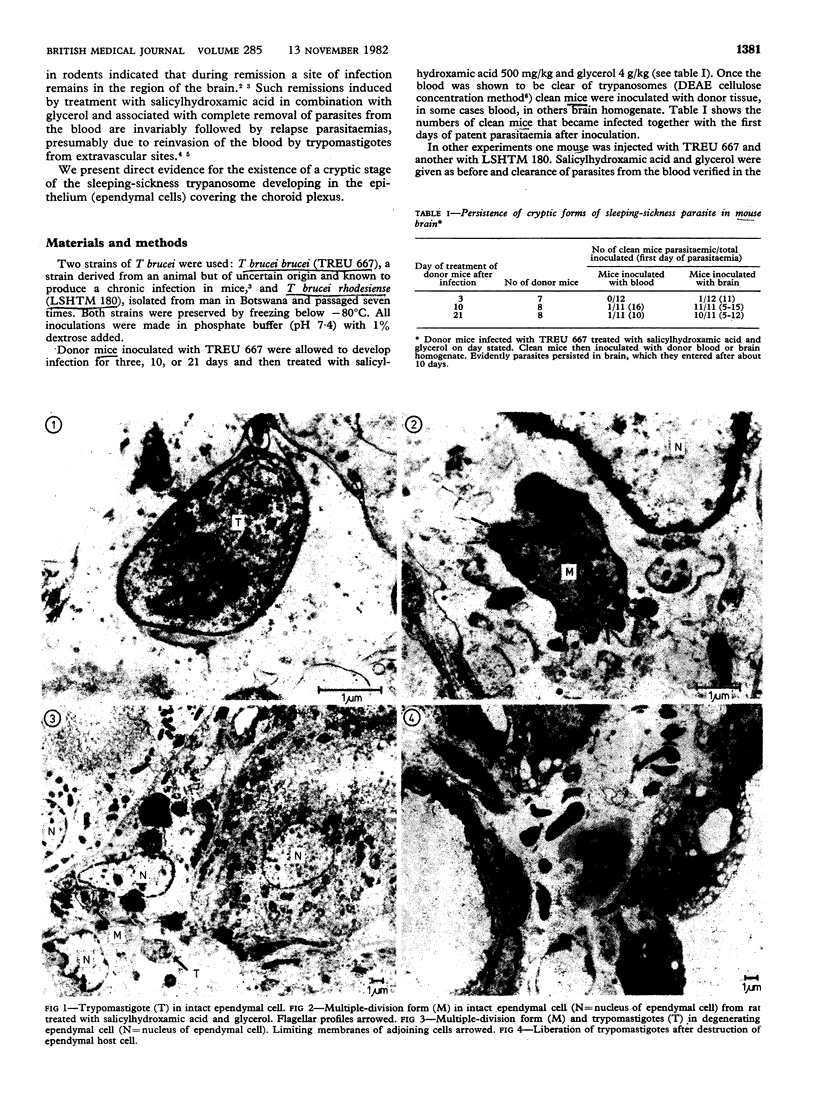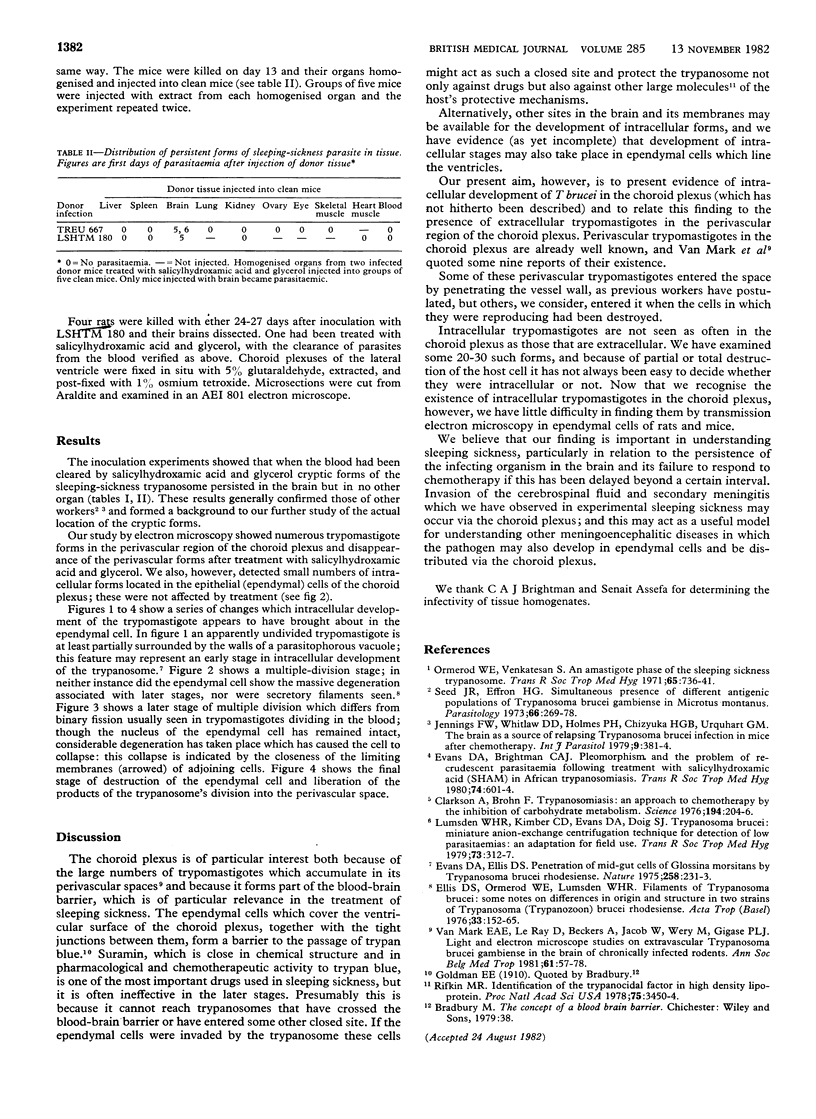Abstract
Electronmicrographs of the choroid plexus from rats infected with Trypanosoma brucei rhodesiense showed that trypomastigotes from the perivascular spaces may penetrate and undergo multiple division in the ependymal cells which locally constitute the blood-brain barrier. Progressive degeneration of the ependymal cell liberates trypomastigotes back into the perivascular space, from which re-entry into the blood may occur. Re-entry to the blood does not take place from any tissues other than the brain and its membranes. These findings suggest that the ependymal cells of the choroid plexus are the site of the cryptic stage of the sleeping-sickness trypanosome.
Full text
PDF


Images in this article
Selected References
These references are in PubMed. This may not be the complete list of references from this article.
- Clarkson A. B., Jr, Brohn F. H. Trypanosomiasis: an approach to chemotherapy by the inhibition of carbohydrate catabolism. Science. 1976 Oct 8;194(4261):204–206. doi: 10.1126/science.986688. [DOI] [PubMed] [Google Scholar]
- Evans D. A., Brightman C. A. Pleomorphism and the problem of recrudescent parasitaemia following treatment with salicylhydroxamic acid (SHAM) in African trypanosomiasis. Trans R Soc Trop Med Hyg. 1980;74(5):601–604. doi: 10.1016/0035-9203(80)90148-0. [DOI] [PubMed] [Google Scholar]
- Evans D. A., Ellis D. S. Penetration of mid-gut cells of Glossina morsitans morsitans by Trypanosoma brucei rhodesianse. Nature. 1975 Nov 20;258(5532):231–233. doi: 10.1038/258231a0. [DOI] [PubMed] [Google Scholar]
- Jennings F. W., Whitelaw D. D., Holmes P. H., Chizyuka H. G., Urquhart G. M. The brain as a source of relapsing Trypanosoma brucei infection in mice after chemotherapy. Int J Parasitol. 1979 Aug;9(4):381–384. doi: 10.1016/0020-7519(79)90089-4. [DOI] [PubMed] [Google Scholar]
- Lumsden W. H., Kimber C. D., Evans D. A., Doig S. J. Trypanosoma brucei: Miniature anion-exchange centrifugation technique for detection of low parasitaemias: Adaptation for field use. Trans R Soc Trop Med Hyg. 1979;73(3):312–317. doi: 10.1016/0035-9203(79)90092-0. [DOI] [PubMed] [Google Scholar]
- Ormerod W. E., Venkatesan S. An amastigote phase of the sleeping sickness trypanosome. Trans R Soc Trop Med Hyg. 1971;65(6):736–741. doi: 10.1016/0035-9203(71)90088-5. [DOI] [PubMed] [Google Scholar]
- Rifkin M. R. Identification of the trypanocidal factor in normal human serum: high density lipoprotein. Proc Natl Acad Sci U S A. 1978 Jul;75(7):3450–3454. doi: 10.1073/pnas.75.7.3450. [DOI] [PMC free article] [PubMed] [Google Scholar]
- Seed J. R., Effron H. G. Simultaneous presence of different antigenic populations of Trypanosoma brucei gambiense in Microtus montanus. Parasitology. 1973 Apr;66(2):269–278. doi: 10.1017/s0031182000045200. [DOI] [PubMed] [Google Scholar]
- Van Marck E. A., Le Ray D., Beckers A., Jacob W., Wery M., Gigase P. L. Light and electron microscope studies on extravascular Trypanosoma brucei gambiense in the brain of chronically infected rodents. Ann Soc Belg Med Trop. 1981 Mar;61(1):57–78. [PubMed] [Google Scholar]




